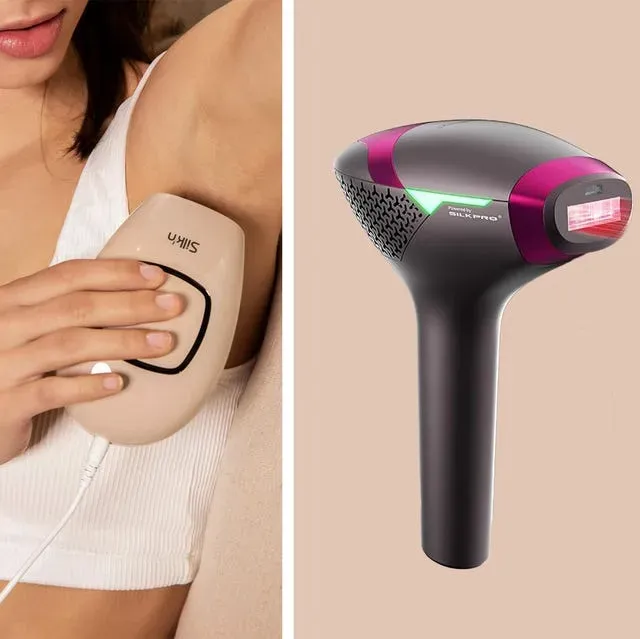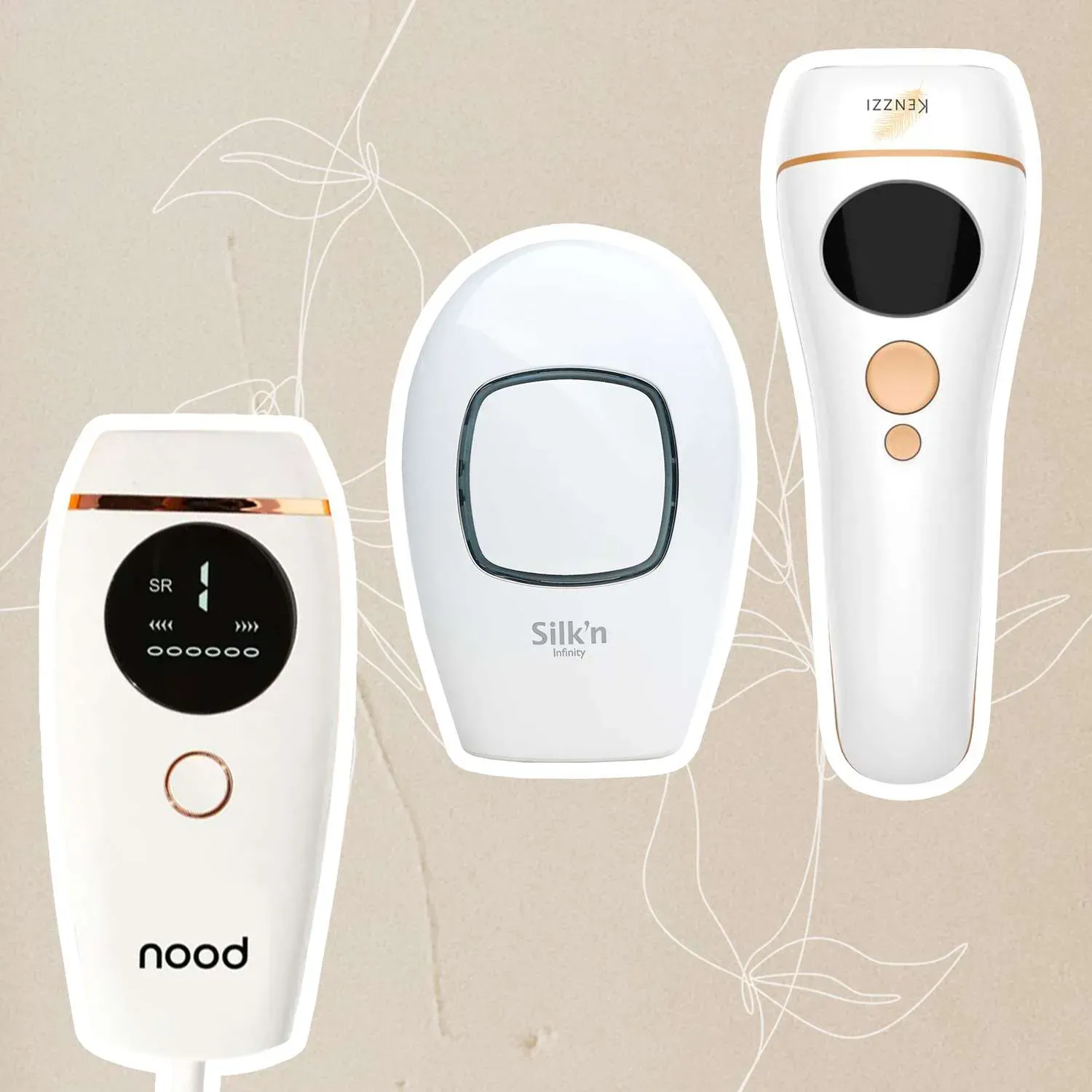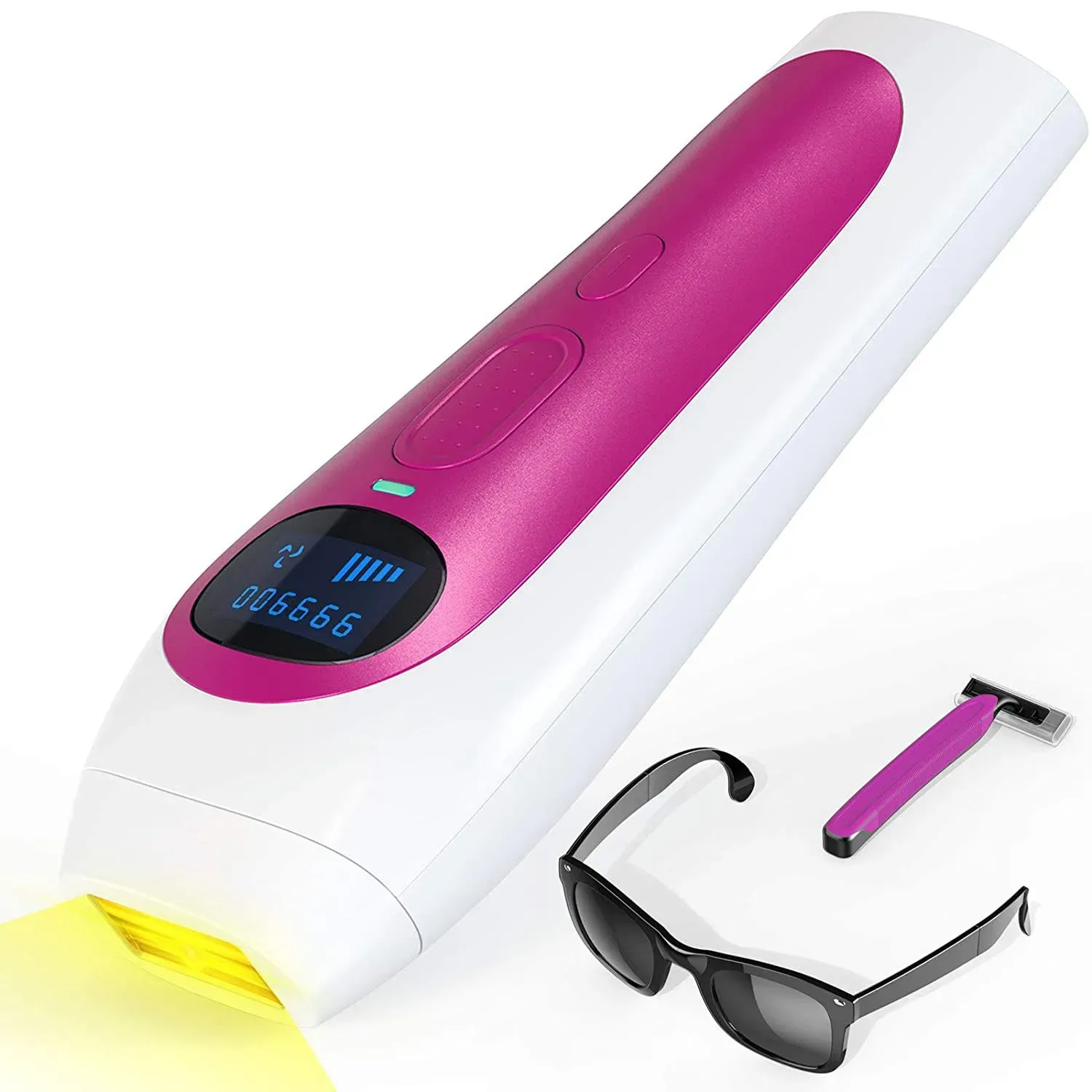Table of Contents
Tired of the endless cycle of shaving nicks, painful waxing appointments, or those stubbly days waiting for the hair to be long enough for the next torture session? You're not alone. Achieving silky-smooth skin often feels like a full-time job, complete with irritation, ingrown hairs, and a significant drain on your wallet. Many of us dream of a more permanent solution without committing to expensive clinic treatments that require blocking out chunks of your day and your budget.
Understanding AtHome Hair Removal Technology

Understanding AtHome Hair Removal Technology
It's Not Exactly a Lightsaber, But Close
So, you're looking at these devices, right? They flash lights or lasers at your skin, and somehow, *poof*, less hair? It sounds a bit like science fiction, or maybe a fancy cat toy, but there's actual tech behind it. The main players in the at-home game are Intense Pulsed Light (IPL) and diode lasers. Think of IPL as a broad flashbulb, hitting a wider area with a spectrum of light wavelengths. It's generally less intense and often requires more sessions. Laser, on the other hand, uses a single, focused wavelength of light, aiming more precisely at the hair follicle. Diode lasers are the ones you're most likely to find in home devices, aiming for that sweet spot of effectiveness and safety for consumer use. Understanding AtHome Hair Removal Technology starts with knowing this basic difference – broad light versus focused beam.
Targeting the Root of the Problem (Literally)
How does this light trick actually work? The magic happens with melanin, the pigment that gives your hair its color. These devices are designed to send light energy down the hair shaft, where it's absorbed by the melanin. This absorbed energy then converts to heat, damaging the hair follicle at the root. The goal isn't to vaporize the hair instantly (though sometimes you might smell a faint singe, which is... reassuringly gross). Instead, it's to injure the follicle enough to inhibit future hair growth, or at least make it grow back finer and slower. It works best when there's a clear contrast between the melanin in the hair and the melanin in the skin – dark hair on light skin is the ideal target.
Quick Tech Comparison
- IPL: Uses a broad spectrum of light. Generally gentler, wider coverage per flash, often requires more treatments.
- Diode Laser: Uses a single wavelength of light. More targeted, potentially more effective per session for suitable candidates.
Clinic Power vs. Couch Convenience
Let's be real: the devices you buy for home use aren't the same powerhouses you'd find in a dermatologist's office. Clinic lasers are significantly more powerful, which is why they can often achieve faster, more dramatic results and can sometimes treat a wider range of skin tones (though still with limitations). At-home devices are deliberately designed with lower energy levels for safety reasons – you're operating it yourself without medical supervision. This means you'll need patience. Lots of it. Results build up over multiple sessions, typically spread out over several weeks or months. Don't expect to be stubble-free after one go. It's a marathon, not a sprint, when you're Understanding AtHome Hair Removal Technology.
Are You the Right Candidate for AtHome Devices?

Are You the Right Candidate for AtHome Devices?
The Skin Tone and Hair Color Sweet Spot
let's get down to brass tacks: not everyone is a perfect fit for these at-home devices, and that's just the reality. The technology, whether IPL or diode laser, relies heavily on the contrast between your hair color and your skin tone. Think of it like trying to spot a black cat in a coal mine versus a black cat on fresh snow. The devices work best when your hair is dark (rich in melanin) and your skin is light (low in melanin). This contrast allows the light energy to target the hair follicle effectively without overheating the surrounding skin. If you have very light blonde, red, white, or grey hair, there isn't enough melanin for the device to target, meaning you likely won't see significant results. Similarly, if you have a darker skin tone, there's more melanin in your skin, which can absorb too much of the light energy. This increases the risk of burns, hyperpigmentation, or hypopigmentation. So, figuring out if you are the right candidate for at home devices often starts here.
Beyond Pigment: Patience and Perseverance
While skin and hair color are the primary factors, there's more to consider when determining if you are the right candidate for at home devices. Your pain tolerance plays a role – while generally less painful than waxing, you'll still feel a sensation, sometimes described as a rubber band snap or a quick zap. If you have extremely sensitive skin or certain skin conditions like eczema or psoriasis in the treatment area, these devices might not be suitable. Pregnancy, certain medications, and recent sun exposure are also contraindications. Perhaps most importantly, are you willing to commit? These aren't one-and-done solutions. You need to follow the treatment schedule religiously for weeks, often months, to see noticeable reduction. If you're looking for instant gratification, keep your razor handy. If you can commit to the process, however, the payoff might be worth it.
- Ideal Scenario: Dark hair, light skin.
- Less Ideal: Very light hair (blonde, red, white, grey).
- Risky: Darker skin tones.
- Considerations: Skin sensitivity, medical conditions, patience for multiple sessions.
Factors When Choosing the Best Laser Hair Removal at Home Devices

Factors When Choosing the Best Laser Hair Removal at Home Devices
Sorting Through the Options: What Matters Most?
Alright, so you've decided you're likely a good candidate, you understand the tech isn't instant magic, but you're ready to commit to the process. Now comes the fun part: actually picking one of the many gadgets on the market. Navigating the options can feel like trying to choose a snack in a foreign supermarket – lots of shiny packaging, but what's actually inside? When you're weighing the Factors When Choosing the Best Laser Hair Removal at Home Devices, don't just grab the cheapest one or the one with the most glowing (and possibly fake) online reviews. Think about the technology first – is it IPL or diode laser? Does it suit your specific skin tone and hair color combination according to the manufacturer's chart? Pay attention to the number of flashes the device is rated for; some have cartridges you'll need to replace, adding to the long-term cost, while others boast flashes that should last a lifetime (yours, maybe not the device's). Consider the treatment area size – a tiny window will take forever on legs, while a large one might be tricky around tricky spots like the upper lip. Power levels matter too; look for adjustable intensity settings, which allow you to start low and increase as your skin tolerates it, and features like skin tone sensors that prevent the device from firing if your skin is too dark or too recently tanned. Also, check reviews for ease of use, comfort, and how long the battery lasts if it's cordless. Nobody wants a device that dies halfway through a calf.
Comparing the Best Laser Hair Removal at Home Devices on the Market
Sorting Through the Specs: What Separates the Pack?
So you've read the reviews, maybe watched a few demo videos, and now you're staring at a screen full of options, all claiming to be the best thing since sliced bread for getting rid of unwanted hair. It's easy to get lost in the jargon – flashes, joules, IPL vs. laser, corded vs. cordless. When you're truly Comparing the Best Laser Hair Removal at Home Devices on the Market, you need to look beyond the glossy photos. Does the device have a built-in skin tone sensor that actually works reliably? This is crucial for safety, especially if you're anywhere near the edge of the recommended skin tone range. How many intensity levels does it offer? More levels mean finer control over your treatment, allowing you to find the sweet spot between effectiveness and comfort. Look at the treatment window size – a bigger window means faster treatment on large areas like legs, but a smaller, precision head is essential for fiddly spots like the upper lip or bikini line. Some devices boast cooling features, which can make a huge difference in comfort, especially on sensitive areas. Don't forget the practical stuff: how long does it take to charge? How heavy is it? Is the design ergonomic enough that your hand won't cramp after ten minutes?
Real-World Performance vs. Marketing Hype
Beyond the technical specifications, the real test comes down to performance and user experience. While the marketing might promise permanent hair removal after just a few weeks, the reality is often more nuanced. Look for devices with a solid track record and consistent positive feedback from users who match your skin and hair profile. Some brands are known for their reliability and customer support, which can be a lifesaver if you encounter issues. Are there independent reviews or clinical studies backing up their claims? Be wary of devices with suspiciously low prices or over-the-top promises. When Comparing the Best Laser Hair Removal at Home Devices on the Market, consider the total cost of ownership too – some devices have replaceable cartridges, adding to the expense over time, while others offer a fixed number of flashes intended to last for years. Think about how easy the treatment plan is to follow and whether the device has features, like app connectivity or reminder systems, that help you stay on track. Ultimately, the "best" device is the one that is safe, effective for your specific needs, and fits into your lifestyle.
Here's a quick look at features to compare:
- Technology Type (IPL vs. Diode Laser)
- Skin Tone & Hair Color Compatibility (Check the chart!)
- Number of Flashes/Lamp Lifespan
- Adjustable Intensity Levels
- Treatment Window Size(s)
- Integrated Safety Features (Skin Sensor)
- Cooling Features
- Corded vs. Cordless Operation
- Price and Long-Term Costs (Replaceable parts?)
- Brand Reputation and Customer Reviews
Getting Real Results with Your AtHome Device

Getting Real Results with Your AtHome Device
Consistency is King (and Queen)
you've unboxed your shiny new gadget, read the manual (mostly), and you're ready to zap. But how do you actually start Getting Real Results with Your AtHome Device? Forget the movie montages where one flash fixes everything. The absolute cornerstone of success here is consistency. These devices work by targeting hair in its active growth phase, and not all your hair is on the same schedule. You need repeated sessions, spaced out according to the manufacturer's instructions – typically every week or two initially – to catch different hairs as they cycle through. Skipping sessions or doing them too frequently won't speed things up; in fact, it might just irritate your skin or waste flashes. Prep is also key: shave the area *just* before treatment so the light energy focuses on the follicle, not the hair above the skin. Make sure your skin is clean, dry, and free of lotions or potions. Sun exposure is a big no-no before and after treatments, so slather on the SPF or plan your sessions for times when you're not hitting the beach.
- Shave right before treatment.
- Clean and dry the skin thoroughly.
- Follow the recommended treatment schedule precisely.
- Avoid sun exposure on treated areas.
- Be patient – results appear gradually over weeks or months.
Making the Call on At-Home Hair Removal
So, are the best laser hair removal at home devices a magic wand for smooth skin? Not quite. They can be a genuinely effective tool for the right person – typically those with a good contrast between hair and skin tone – and with realistic expectations. Consistency is key, and while results vary, you're looking at significant reduction, not necessarily complete eradication forever after just a few sessions. Consider your skin type, pain tolerance, budget, and how committed you are to the treatment schedule. Do your homework, read reviews (the skeptical ones too), and understand the technology. If you're the ideal candidate and willing to put in the time, these devices offer a viable, more private alternative to clinic visits. If not, well, the razor aisle still exists, and waxing studios aren't going anywhere.
